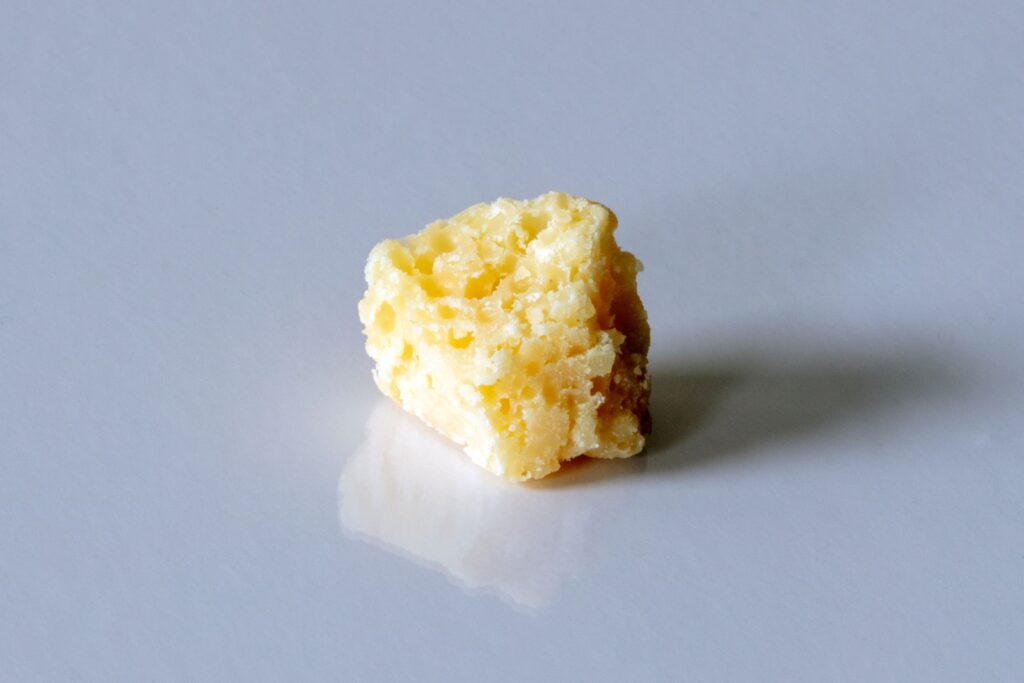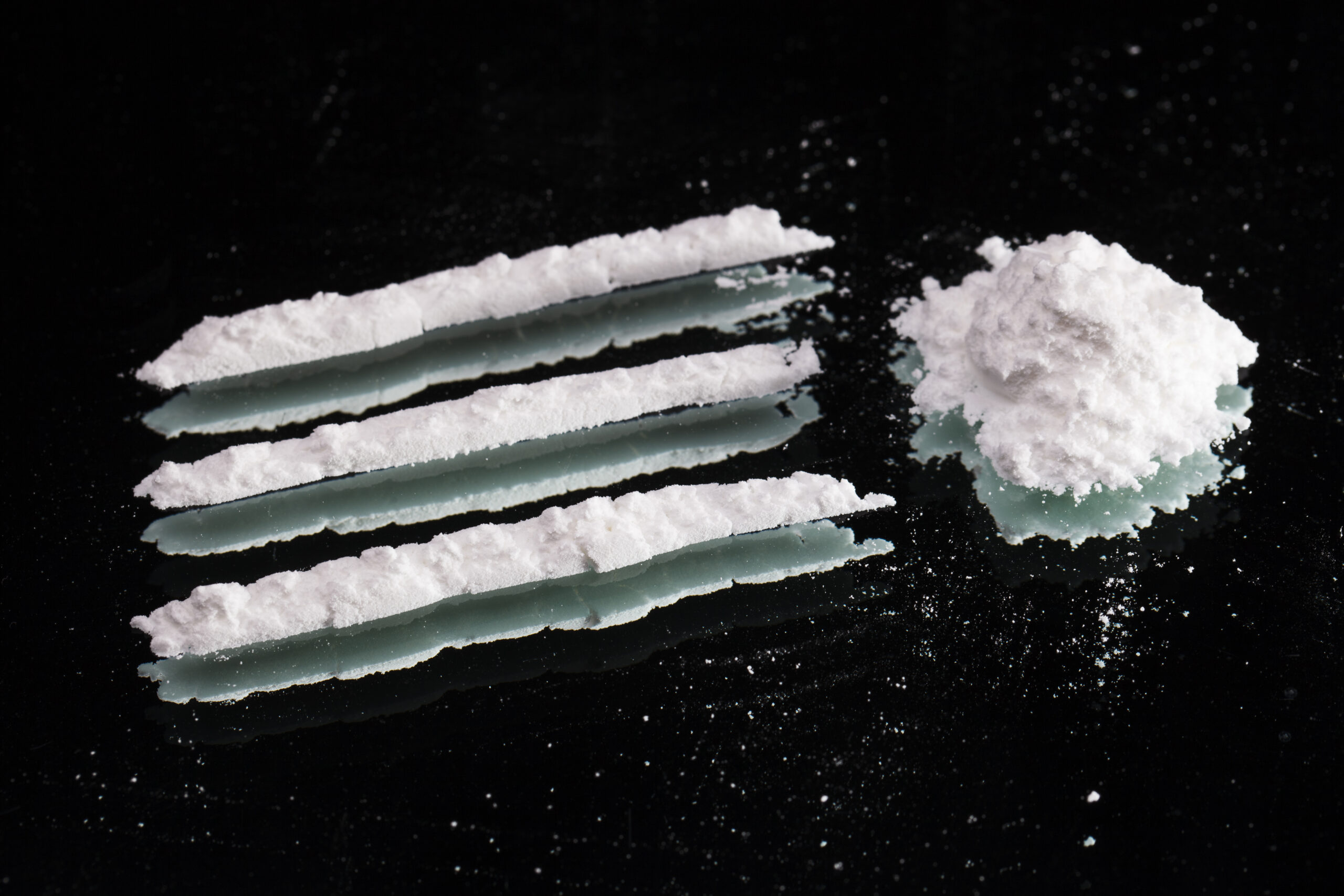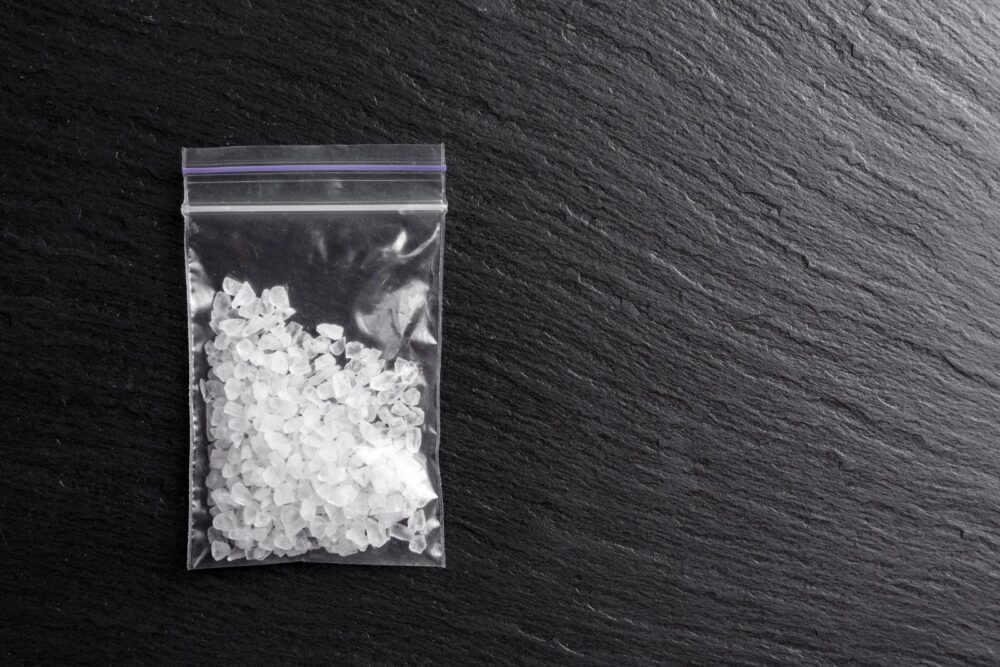Table of Contents
Crack cocaine is typically smoked or injected to produce a rapid and intense high, however, although less common, crack cocaine can be snorted. But can you snort crack?
Snorting crack cocaine is not less dangerous than smoking or injecting it. Snorting crack cocaine can lead to serious health risks, such as damage to the nasal tissues, nasal bleeding, respiratory problems, and increased risk of infections, as well as significant risks of addiction, overdose, and even sudden death.
Here’s what you need to know.
What is Crack Cocaine?
Crack cocaine is a highly addictive and illegal stimulant drug that is made from cocaine hydrochloride, a powder form of cocaine. Crack cocaine is processed with baking soda and water and then smoked, injected, or snorted.
Crack cocaine is typically cheaper and more potent than typical cocaine.
What’s the Difference Between Cocaine and Crack Cocaine?
Cocaine and crack cocaine are two different forms of the same substance, which is derived from the leaves of the coca plant. Cocaine is a white, crystalline powder that is typically snorted. Crack cocaine, on the other hand, is a form of cocaine that has been processed into small, rock-like crystals that are typically smoked or injected, but can be crushed up and snorted as well.
Another notable difference is the duration and intensity of the two substances. When cocaine is snorted, it produces a rapid onset of effects that typically last for 15-30 minutes, but its lingering effects can be felt for up to four hours [1].
Crack cocaine, on the other hand, is smoked, and its effects are generally more intense and shorter-lasting than those of cocaine.
Why Do People Snort Crack Cocaine Instead of Smoking it or Injecting It?
There are many reasons someone may opt for snorting cocaine rather than more common ways of ingesting it. People may choose to snort cocaine because of its relatively fast onset of effects, but social factors may also be at play.
Snorting cocaine often comes with less of a social stigma, while injecting it carries the risk of serious health consequences, such as HIV and hepatitis transmission, as well as is associated with more severe addiction.
All forms of crack cocaine come with significant risks, and one is not safer than the other.
How Does The Body React To Snorting Cocaine?
When crack cocaine is snorted, it is absorbed through the mucous membranes in the nose and enters the bloodstream quickly, producing a rapid and intense high. The effects of snorting cocaine typically begin within a few minutes of use.
Crack cocaine use has potential for both short term and long term risks:
Short Term Side Effects of Snorting Cocaine
The short-term risks of snorting crack cocaine can include:
- Cardiovascular problems: Crack cocaine is a powerful stimulant that can cause a rapid increase in heart rate and blood pressure, which can lead to heart attack, stroke, or other cardiovascular conditions.
- Irritation and damage to the nasal passages: Snorting crack cocaine can cause irritation, inflammation, and damage to the delicate tissues in the nasal passages, which can lead to nosebleeds, and chronic sinus problems.
- Nausea and vomiting: Snorting crack cocaine can cause nausea and vomiting, particularly if the drug is ingested on an empty stomach.
- Seizures: In some cases, snorting crack cocaine can cause seizures, which can be life-threatening.
- Overdose: Snorting crack cocaine can increase the risk of overdose, as the drug is absorbed quickly into the bloodstream.
Long-Term Risks of Snorting Crack Cocaine
The long-term risks of snorting crack cocaine can be severe and can include:
- Addiction and dependence: Crack cocaine is highly addictive, and long-term use can lead to dependence and addiction. This can result in cravings, withdrawal symptoms, and difficulty stopping the use of the drug.
- Chronic cardiovascular problems: Long-term use of crack cocaine can increase the risk of cardiovascular problems, such as heart attack, stroke, and hypertension. This is because the drug can cause damage to the heart and blood vessels, leading to a higher risk of cardiovascular disease.
- Respiratory problems: Chronic snorting of crack cocaine can lead to respiratory problems, including chronic bronchitis, asthma, and other lung diseases. The drug can also cause damage to the nasal passages and sinuses, leading to chronic sinus problems and other issues.
- Mental health problems: Long-term use of crack cocaine can cause a range of mental health problems, including anxiety, depression, paranoia, and psychosis. These conditions can be long-lasting and can be difficult to treat.
- Infectious diseases: Snorting and injecting crack cocaine can increase the risk of infectious diseases, such as HIV, hepatitis B and C, and other blood-borne illnesses. This is because the drug is often used with shared equipment, increasing the risk of transmission of infectious diseases.
- Cognitive impairment: Long-term use of crack cocaine can cause cognitive impairment, including memory problems, difficulty with decision-making, and problems with attention and concentration.
It’s important to note that the body’s reaction to snorting crack cocaine can vary depending on the amount used, and the individual’s physiology. Short-term and long-term risks may overlap.
Can You Get Addicted to Snorting Crack Cocaine?
It is possible to become addicted to crack cocaine through snorting. Crack cocaine is a highly addictive drug, and the method of use, whether it is smoked or snorted, does not change its addictive potential.
Crack cocaine use can quickly lead to tolerance. With repeated use, the brain can become desensitized to the drug’s effects, leading to a need for higher and more frequent doses to achieve the desired high.
Over time, this pattern of use can lead to addiction, which is characterized by compulsive drug-seeking behavior, despite the associated negative consequences.
Frequently Asked Questions About Snorting Crack Cocaine
Answers to some of the most commonly asked questions about crack cocaine.
How common is crack cocaine use?
In the United States, it is estimated that 6,222,000 individuals ages 12 and older have used crack cocaine at least once in their lives.[2]
Is crack cocaine common in Texas?
Crack cocaine is unfortunately common in Texas. In fact, the northern district of Texas is within the top five districts for crack cocaine trafficking offenses in 2020.[3]
Other pertinent statistics on crack cocaine use can be viewed here:
Are crack and crack cocaine the same drug?
Yes, “crack” and “crack cocaine” refer to the same drug. Crack cocaine is a form of cocaine that has been processed into small, rock-like crystals that are typically smoked. The name “crack” refers to the sound that the drug makes when it is heated and smoked.
Can snorting crack cocaine damage your septum?
Yes, snorting crack cocaine can cause damage to the nasal septum, which is the thin wall that separates the nostrils. The drug can cause irritation, inflammation, and damage to the nasal passages, which can lead to perforation or a hole in the nasal septum. This damage can be permanent and can lead to chronic sinus problems, nosebleeds, and other respiratory issues.
What is the most common way to use crack cocaine?
The most common way to use crack cocaine is to smoke it. Crack cocaine is typically sold in small, rock-like pieces that can be heated and then smoked using a pipe or other smoking device. When heated, crack cocaine produces vapors that are inhaled into the lungs, which quickly deliver the drug to the brain and produce a rapid and intense high.
Some people may also choose to dissolve crack cocaine in water and then inject it, or they may snort the drug as a powder. However, smoking is the most common method of administration for crack cocaine due to the intense and immediate effects of the drug.
What is the street name for crack cocaine?
There are many street names for crack cocaine. Some common street names for crack cocaine include:
- Crack
- Rock
- Base
- Hard
- Candy
- Cookies
- Dice
- Gravel
- Nuggets
- Roxann
- Ready rock
- Tornado
The street names for crack cocaine can vary depending on the region and community.
How Long Does a Crack Cocaine High Last When Snorted vs. Other Methods?
A crack cocaine high typically lasts longer when snorted than other methods of ingestion. The average onset duration of a crack cocaine high varies depending on the method of administration.
| Method of Use | Onset | Duration |
| Snorting | 2-3 minutes | 15-30 minutes |
| Gumming | 1-2 hours | 15-30 minutes |
| Smoking | 2-3 minutes | 5-10 minutes |
| Injecting | 5 minutes or less | 5-15 minutes |
Data compiled from Healthline [1]
While snorting coke takes longer for the high to “kick in,” than injecting, and the onset of smoking and snorting are the same, the high from snorting crack cocaine is more intense. This is why many crack cocaine users opt for snorting the drug.
Treatment Works: Overcoming Crack Cocaine Abuse With Infinite Recovery
You don’t have to live in the grips of a crack cocaine addiction. Addiction treatment can help.
If you or a loved one are struggling with an addiction to snorting crack cocaine or other substance use disorders, call and speak with a member of the Infinite Recovery team today and learn how we can help you get your life back.
If you have more questions about the effects of snorting crack cocaine or how to overcome addiction, contact a member of the Infinite Recovery team.
Sources:
[1] Santos-Longhurst, A. Healthline. (2022, July 14). How long does a cocaine high last? What to expect. Retrieved from https://www.healthline.com/health/how-long-does-cocaine-high-last on 2023, February 16
[2] National Drug Intelligence Center. (n.d.). What is crack cocaine? What does it look like? What are the risks? Retrieved from https://www.justice.gov/archive/ndic/pubs3/3978/3978p.pdf on 2023, February 17
[3] United States Sentencing Commission. (n.d.). Quick facts: crack cocaine trafficking offenses. Retrieved from https://www.ussc.gov/sites/default/files/pdf/research-and-publications/quick-facts/Crack_Cocaine_FY20.pdf on 2023, February 17



















